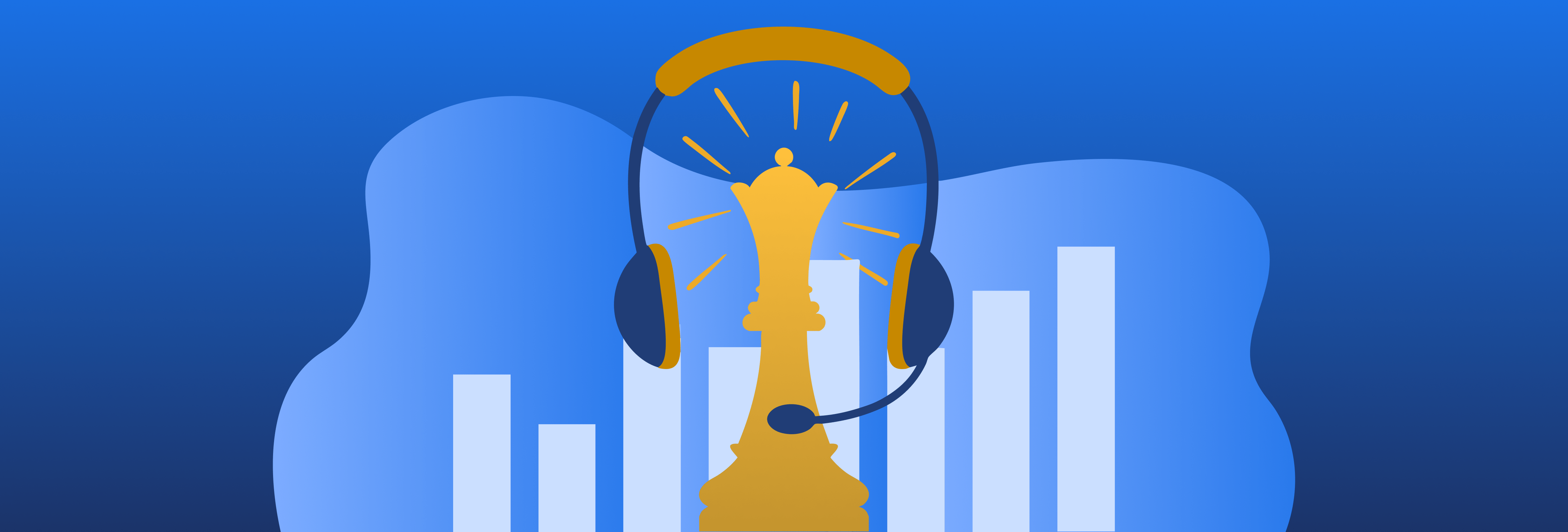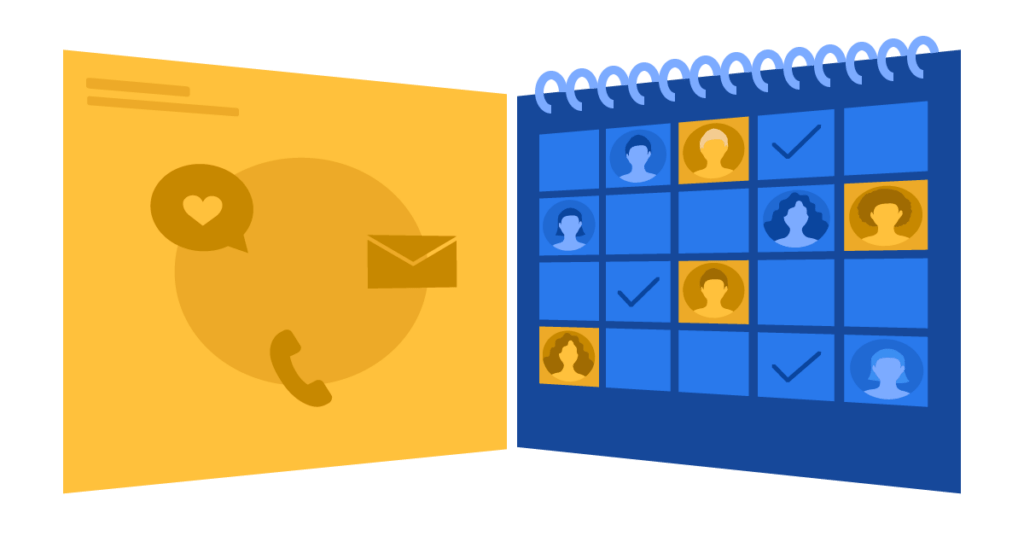83 Cold Calling Statistics [2025]: Key Insights, Expert Tips, and Why Outbound Outreach Still Matters


Makenzi Cotton
As sales leaders, you have probably heard how “cold calling is dead” for many years now. And yet, new cold calling statistics for 2025 reveal that organizations must leverage cold outreach to sustain a healthy sales pipeline.
A few overall 2025 cold calling trends we see
Longer Sales Cycle
With more decision-makers on the buying committee, many sales leaders report longer sales cycles. This means a more aggressive outreach strategy can future-proof your pipeline.
Lower success rates with cold emails
Many sales leaders also leverage email marketing to increase their touches. However, robust email spam programs have caused marketing automation effectiveness to decrease.
Higher use of AI in sales
Unsurprisingly, many sales leaders are open to utilizing AI to perform more manual tasks and accelerate their productivity. That said, AI can never replace human-to-human communication.

Download the Ultimate B2B Appointment Setting Guide
Download the B2B Appointment Setting Guide to learn how to properly prospect and cold-call best practices.
1. Sales Prospecting Statistics
- 42% of salespeople say that prospecting is the most challenging aspect of their job (HubSpot)
- 69% of buyers say they have picked up a sales call from new vendors within the last year (Finances Online, 2024)
- While 27% of sellers say cold calls are effective, only 2% result in a sales appointment (Zendesk)
- 37% of salespeople cite phone calls as the most effective lead source during cold outreach (HubSpot)
- 24% of surveyed businesses use cold calling as a primary channel, while 25% others use cold calls as their secondary channel (HubSpot)
- 69% of surveyed email senders report declining performance in cold emails due to spam filters and AI content fatigue (Mailshake)
- The best-performing cold email senders that utilize dynamic content see the highest platform ROI (Mailshake)
- Personalized cold emails see a 32% higher response rate as opposed to generic content (Salesloft)
- 55% of surveyed cold callers say that a personalized, research-driven approach is key to their effectiveness (HubSpot)
Sales Prospecting Statistics Key Takeaways
Cold calling isn’t dead, as decision-makers are still open to proactive sales outreach. That said, you should find ways to personalize cold emails to maximize performance.
To drive higher cold email marketing results, consider partnering with EBQ. Our certified marketing automation specialists can leverage your platform to develop an omnichannel outreach strategy.
2. Best Times to Call Statistics
- 30% of reps say that Tuesday is the best time to cold call, followed by Wednesday (27%) (HubSpot)
- The best times to cold call are 11 AM – 12 PM and 4 PM – 5 PM (Zendesk)
- 49% of successful cold calls only last between 2 – 5 minutes (HubSpot)
Best Time to Call Statistics Key Takeaways
For prospects who may be harder to connect with, aim for the middle of the work week — right before their lunch break, or when they clock out.
Once you get prospects on the phone, keep your conversations short and sweet. We find that it’s better to leave your prospects wanting to learn more about you than potentially boring them.
For more expert advice on cold calling, check out our 10 best practices →
3. Seller-Buyer Alignment Statistics
- 54.5% of surveyed businesses indicate seller-and-buyer misalignment is a problem (Emblaze)
- Win rates increase by 38% when buyers and sellers are aligned (Emblaze)
- Sellers who focus on problems are 30% more effective, but only 13% do so (Emblaze)
- 81% of surveyed buyers initiate first contact with sellers (6Sense)
- Sales leaders who provide self-service tools to buyers are 47% more likely to achieve their sales targets (HubSpot)
- 83% of sales leaders say their team struggles to keep up with evolving buyer needs (Gartner)
- 82% of surveyed sales leaders say that connecting with people is the most important aspect of selling (HubSpot)
Seller-Buyer Alignment Statistics Key Takeaways
If you’re experiencing lower success rates, audit your buyer persona and ideal customer profiles (ICP). Chances are, your messaging isn’t resonating because you’ve been targeting the wrong audience. Make sure you utilize your most recent customer data to draw conclusions.
From there, we recommend double-checking your common objections and responses. We find that adequately preparing your salespeople with proven talk tracks often boosts conversion rates.
4. Buyer Behavior Statistics
- 75% of B2B buyers take longer to commit than they did two years ago (Forrester)
- In medium-sized companies (100-500 employees), 7 individuals typically participate in an average buying decision (Gartner)
- An average of 17 contacts is involved in large strategic deals (HubSpot)
- An average buying group has grown to 10+ stakeholders (6Sense)
- Almost all (90%) of B2B buyers review more than 2 websites before purchasing (Dialogtech)
- 71% of potential buyers prefer independent research over talking to a salesperson (HubSpot)
- Buyers don’t typically engage until they are 69% through their buyer journey (6Sense)
- Most (80-90%) of buyers have a vendor shortlist before they start actively researching (6Sense)
- 78% of buyers only consider 3 vendors to evaluate deeply (Wynter)
- The typical B2B buying cycle is now 11.5 months (6Sense)
- 86% of B2B negotiations stall during the buying process (Forrester)
Buyer Behavior Statistics Key Takeaways
As more decision-makers make up a typical buying committee, the average sales cycle timespan will inevitably lengthen.
To sustain your sales pipeline, we recommend adopting an all-bound sales strategy. This hybrid model enables your sales reps to chase both warm and cold prospects, which improves morale, productivity, and ultimately performance.
Finally, make sure your sales collaterals are properly designed and branded. After all, your marketing materials and handouts heavily influence your prospects’ lasting impression — so make sure it’s a great one.
5. Sales Time + Productivity Statistics
- Sales reps spend only 33% of their time actively selling (HubSpot)
- Most (54%) of surveyed sales reps say selling has been harder than it was before (HubSpot)
- Sales reps can spend up to 40% of their time prospecting (HubSpot)
- Daily administrative tasks can take more than an hour of sales reps’ time (HubSpot)
- Salespeople spend 21% of their day crafting emails (HubSpot)
- Sales reps spend 15% of their time leaving voicemails, with 80% of sales calls going to voicemail (Ringlead)
- It takes 6 to 12 months for a new sales rep to become fully productive (HubSpot)
Sales Time + Productivity Statistics Key Takeaways
Driving sales productivity starts with evaluating your contact database. After all, an outdated prospect list means less time actively selling and more time spinning your wheels.
We also recommend leveraging a CRM to automate a lot of manual tasks, such as lead routing. This will give your salespeople more time to actively sell, as they don’t need to waste time on as many administrative tasks.
6. Sales Training Statistics
- 60% of B2B firms spend ≥ 3 hrs/week on rep coaching (SPOTIO)
- Continuous training increases net sales per employee by 50% (Qwilr)
- Without ongoing reinforcement, employees forget 84% of training content in 3 months (Qwilr)
- Sales enablement strategies improve win rates by 49% (G2)
- 50% of engagement comes from just 10% of sales enablement content (G2)
- 52% of sales pros use enablement content; 79% say it’s crucial for closing (HubSpot)
Sales Training Statistics Key Takeaways
Make sure you document all your best practices in an accessible SDR Playbook for your reps to reference. This manual should cover everything from your target personas to suggested sales talk tracks.
It also takes a while for your new hire to master your unique processes, so consider outsourcing your business development functions instead. For example, EBQ’s appointment-setting services are all trained to leverage industry-leading tools and maximize outreach attempts from the get-go. We also regularly upskill our reps to ensure optimized productivity.
7. Lead Generation + Nurturing Statistics
- Almost half (45%) of B2B companies said lead generation is their biggest challenge (Sopro)
- Only 39% of firms consistently apply lead qualification criteria (MarketingSherpa)
- 55% of leads are ignored due to poor qualification (MarketingSherpa)
- Only 44% of companies use some form of lead scoring systems (DecisionTree)
- Nurtured leads produce 20% more sales opportunities than non-nurtured leads (DemandGen Report)
- Marketing automation improved lead quality by 451% (ANNUITAS)
- Companies that nurture leads close 50% more sales while spending 33% less (Forrester)
- Nurtured leads spend 47% more than non-nurtured leads (ANNUITAS)
Lead Generation + Nurturing Statistics Key Takeaways
Cold calling is only as effective as your subsequent lead nurturing efforts, so take a moment to evaluate your holistic lead generation processes.
For example, make sure you utilize a lead rating system that objectively identifies your warmest leads. From there, you can leverage a marketing automation platform to help nurture your leads further as your BDRs focus on making dials.
8. Following Up + Conversion Rates Statistics
- Only 2% of sales are closed from the first contact (IRC Sales Solutions)
- 35–50% of sales go to the vendor that responds first (ZoomInfo)
- 80% of sales require 5+ follow-ups, yet 92% of reps quit after 4 (Invesp)
- 44% of salespeople give up after a single attempt (Invesp)
- The first follow-up email can increase reply rates by 49% (HubSpot)
- Making follow-up call attempts can boost conversion rates by up to 70% (Zendesk)
Following Up + Conversion Rates Statistics Key Takeaways
For example, never give up after just one attempt! Instead, use a sales cadence to ensure persistent (yet professional) follow-up. Our sales cadence separates warm prospects from cold prospects, which helps our reps prioritize which leads to contact first.
Moreover, make sure you train your reps on how to bypass the gatekeeper. While they are not the final decision-maker, they help accelerate your follow-up attempts by referring you directly to the right person.
9. Social Selling Statistics
- Salespeople who use social selling are 51% more likely to hit quota (LinkedIn)
- 61% of organizations using social selling report higher revenue growth (Sociabble)
- 75% of B2B buyers use social media to make purchasing decisions (LinkedIn)
- 61% of organizations that leverage social selling see a revenue growth (Sociabble)
- 56% of sales professionals use social media to find new prospects (HubSpot)
- Prospects engage most at industry events (34%), then LinkedIn (21%) (HubSpot)
Social Selling Statistics Key Takeaways
Your cold calling success hinges on whether your brand reputation is strong. The majority of surveyed buyers prefer to do their due diligence by researching vendors shortly after the initial cold call.
10. AI in Cold Calling Statistics
- AI tools can increase sales productivity by 29% (Salesforce)
- 84% of AI users say it improves customer interactions and sales (Salesforce)
- 41% of AI-using sales pros analyze buyer sentiment (HubSpot)
- 83% of surveyed salespeople say AI sentiment analysis is very effective (HubSpot)
- 63% of sales leaders say AI helps them compete (HubSpot)
- 23% of daily cold callers use AI extensively; 49% use it occasionally (HubSpot)
- Salespeople who leverage AI save an average of 12 hours per week by cutting down manual tasks (ZoomInfo)
- Sales teams that use AI are 1.3x more likely to see revenue increase (Salesforce)
Sales Time + Productivity Statistics Key Takeaways
We encourage salespeople to utilize AI and automation tools to accelerate their prospecting research activities, such as finding prospects and importing their information into a CRM.
However, people still crave connections with people — not robots. Make sure you are utilizing your newfound “free time” to deepen relationships with prospects and customers.
Why Cold Outreach Still Matters
With many sales professionals reporting longer sales cycles and lower cold email performance, you still need cold calling to ensure a sustainable sales pipeline.
Therefore, cold calling allows you to:
- Proactively find new sales opportunities
- Gain real-time marketing feedback
- Quickly overcome objections
Of course, your cold calling success is highly dependent on your appointment setting team’s expertise. Even the best data and timing won’t convert if your team isn’t skilled at engaging prospects, navigating gatekeepers, and moving conversations toward the next step.
That’s where EBQ comes in. Our dedicated appointment setting specialists handle outreach, follow-up, and appointment scheduling so your sales team can focus on closing. Learn more about EBQ’s appointment setting services and see how we can help you fill your pipeline with qualified, sales-ready meetings.
About the Author:
Makenzi is a Revenue Consultant at EBQ. She specializes in Salesforce Solution Engineering. With experience managing 100+ projects and streamlining 340+ workflows, she drives TOF growth and improves SQL-to-MQL conversions. Her expertise regularly delivers 200-300% ROI for organizations.
